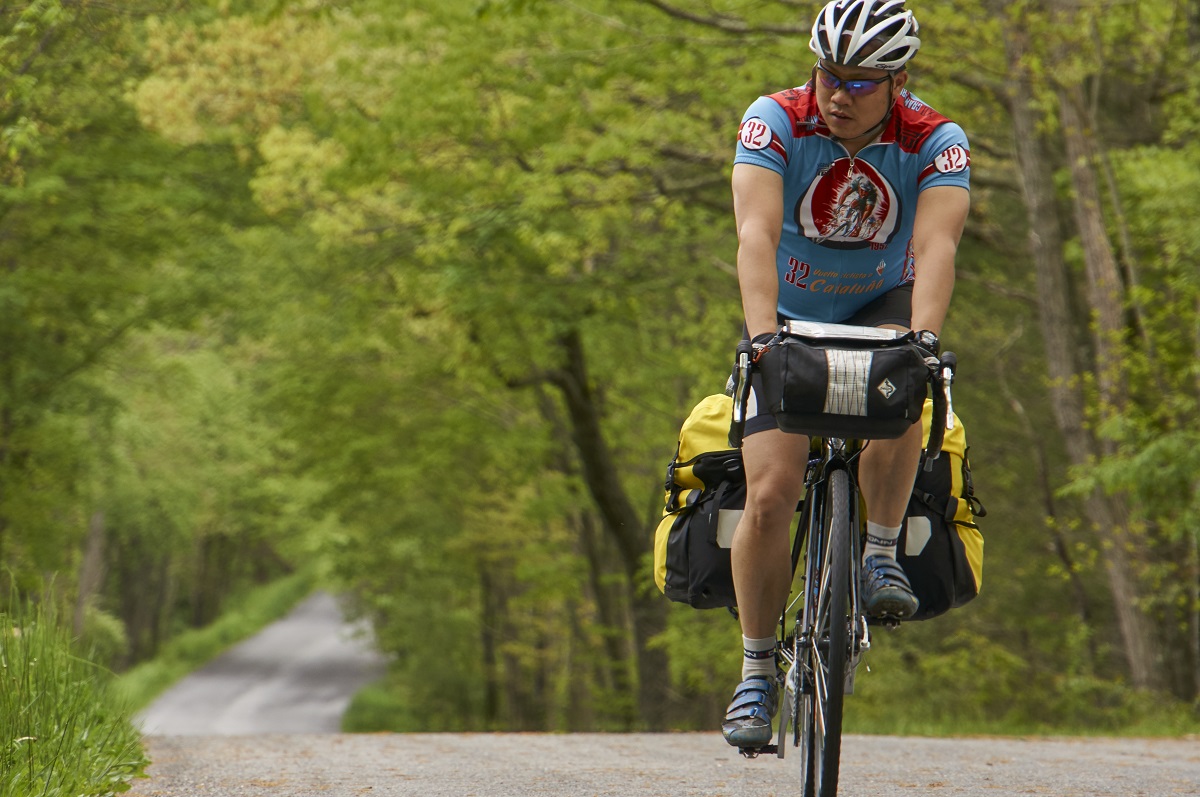How to Train for Your Tour
Once you’ve hammered out a route and a timeline for your upcoming tour, and your bike and gear are in tip-top shape, it’s time to start getting your body ready.
You might consider the three legs of the “tripod of training” to be conditioning, nutrition, and hydration.
When training for a bike tour, you’re not only putting your specific muscles (and specific soft tissue areas, like your bottom!) through the paces, you’re also training things you don’t see, or don’t necessarily even think about, to enable them to run more efficiently.
And if you’re coming out of winter hibernation or another period of relative inactivity, training will be especially important.
Training Makes for a Happier Tour
Riding a bicycle day after day, whether loaded with gear or not, can be physically demanding, particularly on the legs, butt, and upper back and shoulders.
Sure, you might be able to successfully complete your planned tour without following a program like the one outlined below, but a large share of your trip would double as training. If you get in shape in advance, then the tour can be enjoyed from the outset rather than simply endured for a certain amount of time. And if your tour is “only” a week long, you might find yourself finally getting in proper shape just when it’s time to return home.
The better your fitness, the less likely you’ll sustain an overuse injury and/or saddle sores, which have ruined many a tour.

Building a Training Plan
This program — especially the recommended mileages — is aimed at preparing for a long-distance, multiweek tour. You can gear down accordingly if you’re heading into something shorter and more leisurely.
Stage 1: Base Training Miles
Start training at least 12 weeks before your planned departure date. Your first four-week period can take place indoors on a trainer if winter or early spring weather inhibit outdoor riding.
Ride three or four days a week. Don’t worry too much about distance; go more for time. Try to work up to two hours for the longest ride.
Most riding should take place at a steady pace, one you think you’ll be able to keep up for hours, spinning gears low enough to keep you in the range of 70 to 90 revolutions per minute.
Take time to add in a stretching routine, even if it’s for only five or 10 minutes a day. This will help prepare your muscles, tendons, and ligaments for the subsequent training stage.
Stage 2: Building Strength
The goal of the second four-week stage is to build on your base, adding in specific and general strength training.
At least one day per week incorporate some speed intervals, or “sprints” into your workout, achieving a heart rate that’s higher than your touring rate of perhaps 100 to 120 beats per minute.
Seek out more hills, but don’t overdo it. Most of your outings should still be steady-state “spin rides,” including a weekly long ride of two hours or more.
Throw in some calisthenics and/or light weight lifting to exercise body parts that cycling tends to neglect, and keep up the stretching routine.
Stage 3: Building Endurance
During stage three you’ll build endurance atop the foundation you have established. Begin by taking longer rides once or twice a week. By the end of the month, you should be riding 40 to 50 miles on these long rides.
Go to new places and enjoy the scenery. This is what bicycle touring is about, and you’ll be training your mind as well as your body. Take breaks, carry food and plenty of water along, and train for eating and drinking on the road.
Stage 4: Ride with Weight
If you’re planning a self-contained tour, begin to carry weight on the bike as you ride, particularly on the long endurance days. Begin slowly, carrying about 20 pounds or so, and work your way up to carrying all of your gear a couple of times before your trip starts. You need this time to build strength in your ligaments, muscles, and tendons. This will help to avoid injuries and prepare you for an enjoyable trip.
Since you’ll be putting substantially more stress on your body than it’s accustomed to, rest days become just as important as workout days. Get plenty of sleep, practice proper hydration and nutrition, and you will come out of this stage stronger than ever — and raring to go.

